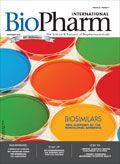Discovery Pipeline: Improved Delivery of RNA Vaccines
Creating an effective nucleic acid-based vaccine requires protecting the fragile nucleic acid from degradation, effective transfection of the targeted cells, and producing high enough levels of antigen to evoke a robust immune response.
Creating an effective nucleic acid-based vaccine requires protecting the fragile nucleic acid from degradation, effective transfection of the targeted cells, and producing high enough levels of antigen to evoke a robust immune response. A group of researchers from Novartis demonstrates how to accomplish these goals using self-replicating RNA encased in a lipid nanoparticle delivery system. In a paper published online Sept. 4, 2012 in the Proceedings of the National Academy of Sciences, the group describes the delivery system, a lipid nanoparticle similar in formulation to nanoparticles used for small interfering RNA delivery. The formulation was efficient at encapsulating RNA, and produced consistently sized particles of between 79-121 nm (mean diameter). The particles protected the RNA from degradation, and were required for efficient transfection of muscle cells.
To produce the vaccine antigen, the researchers used a self-amplifying RNA based on an alphavirus genome. The RNA construct contained genes required to replicate the RNA strand, but lacked the genes for the viral structural proteins necessary to make an infectious particle. Instead, the structural genes were replaced with the genes for the vaccine's antigen. This type of construct will replicate itself within the cell cytoplasm and does not require transport to the cell nucleus or integration into the host cell's genome. The authors created a self-amplifying RNA vaccine against respiratory syncytial virus, and formulated it using lipid nanoparticles. In mice, the vaccine produced a robust immune response and protection against infection comparable to a vaccine made using infectious viral particles. The authors suggest that this system offers advantages over current technologies, including the ability to produce the vaccine synthetically, elimination of the risks of working with infectious particles, and avoidance of immunogenicity against a viral vector.
Source: Geall et al., Proc. Natl. Acad. Sci. online, DOI:10.1073/pnas.1209367109, Sept. 4, 2012.

VERAXA and Voyager to Create Combined Business for Advancing Pipeline of Next-Gen Cancer Therapies
April 23rd 2025The proposed business combination would create a publicly traded, clinical-stage biopharmaceutical company that will focus on developing a pipeline of next-generation cancer therapies.
Thermo Fisher Opens Advanced Therapies Collaboration Center in California
April 18th 2025The 6000-square-foot facility will provide cell therapy developers the support they need to transition to CGMP manufacturing, and an expanded footprint of the new center is expected to open in Philadelphia later in 2025.